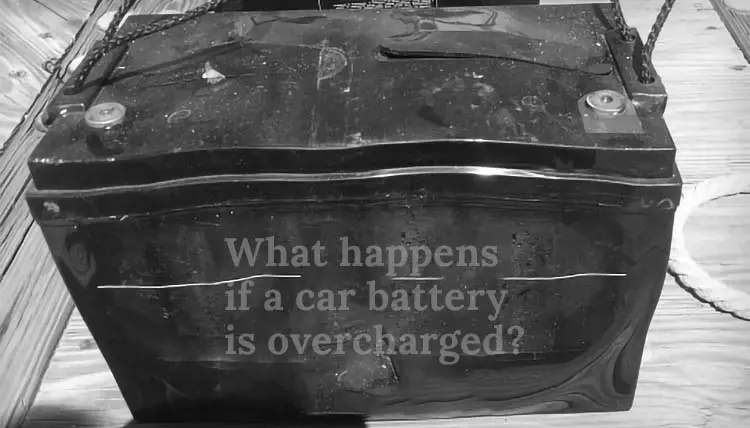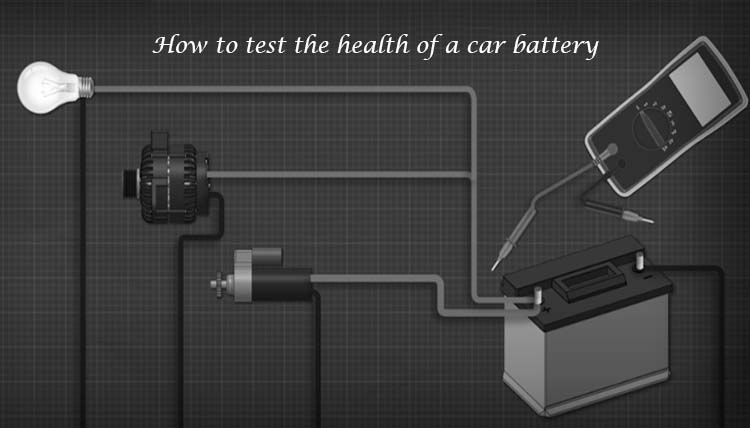Welcome to the beating heart of your vehicle—the car battery. While often overlooked, its role in powering your adventures is unparalleled. As a vigilant driver, you may wonder, “How often should I replace my car battery?” Unraveling the mystery behind this essential component is crucial for preventing unexpected breakdowns.
In this journey through the engine’s heartbeat, we’ll explore the signs that whisper of a tired battery, understand the lifespan nuances, and equip you with the knowledge to determine the perfect moment for a rejuvenating swap. Get ready to demystify the cycles of your car battery and ensure a smooth ride on the road of automotive longevity.

Signs of a Worn-Out Battery
I. Diminished Cranking Power
One of the primary signs pointing to a worn-out car battery is a noticeable decrease in cranking power. If you find your engine struggling to start or hear sluggish cranking noises, it’s time to pay attention. Diminished power often indicates that the battery is no longer holding a charge effectively.
II. Slow Engine Start
An aging battery manifests in a gradual decline in the speed at which your engine starts. If you notice a sluggish start, especially in comparison to its usual response time, it’s a red flag. This can be a result of decreased voltage output from the battery.
III. Warning Lights on the Dashboard
Modern vehicles are equipped with sophisticated systems that monitor the health of various components, including the battery. If you see warning lights related to the battery on your dashboard, it clearly indicates that your battery needs attention. Ignoring these warnings may lead to more significant issues.
IV. Electrical Component Malfunctions
A failing battery can affect the performance of your vehicle’s electrical components. If you experience issues with lights flickering, power windows moving slowly, or the radio behaving erratically, these could be signs of a weakened battery struggling to supply sufficient power.
V. Corroded Battery Terminals
During routine inspections, pay close attention to the battery terminals. Corrosion around the terminals is a common sign of battery wear. The presence of white, powdery residue can impede the flow of electrical current and hinder the battery’s performance.
VI. Old Age
Batteries have a limited lifespan, typically ranging from 3 to 5 years. If your vehicle is still running on its original battery and has surpassed this timeframe, it’s advisable to consider a replacement, even if no apparent signs of wear are present. Proactive replacement prevents unexpected breakdowns.
How often to replace a car battery?
Understanding the lifespan of a car battery is essential for proactive maintenance. On average, car batteries last between 3 to 5 years. However, this is a general estimate, and various factors can influence the actual duration of a battery’s life.
Factors Influencing Battery Longevity
Climate
The climate in which you primarily drive significantly impacts your battery’s lifespan. Extreme temperatures, both hot and cold, can accelerate battery wear. In areas with harsh winters, batteries work harder to crank the engine in the cold, while scorching heat can lead to fluid evaporation and internal damage.
Driving Habits
Your driving habits also play a crucial role in determining how long your car battery lasts. Frequent short trips, stop-and-go traffic, and using electronic accessories without the engine running can strain the battery. Long drives, on the other hand, allow the alternator to recharge the battery effectively.
Vehicle Usage Frequency
A car sitting idle for extended periods is likelier to experience a shorter battery life. Regular usage ensures that the battery remains charged and active. If you have a secondary vehicle or one that you don’t use frequently, consider investing in a battery maintainer to keep it in optimal condition.
Battery Quality
The quality of the battery itself is a critical factor. Opting for a reputable and high-quality battery can contribute to a longer lifespan. Cheaper, lower-quality batteries may not withstand the demands of modern vehicles and can wear out faster.
Maintenance Practices
Regular maintenance, including keeping the battery terminals clean and tight, contributes to a longer lifespan. Periodic checks of the battery’s voltage and electrolyte levels and timely replacements can significantly extend its overall longevity.
General Guidelines on Battery Replacement
a. Age of the Battery
The age of your car battery is a key factor in determining when to replace it. Generally, most automotive experts recommend replacing the battery every 3 to 5 years, even if it appears to function well. This proactive approach helps prevent unexpected failures and ensures reliable performance.
b. Visible Signs of Wear
Keep an eye out for visible signs of wear or damage. If you notice leakage, bulging, or a swollen appearance in the battery case, it indicates that replacement is imminent. Corroded terminals and a weakened structure also signal the need for a new battery.
c. Frequent Jump Starts
If you frequently jump-start your vehicle, it’s a sign that your battery may not be holding a charge effectively. While occasional jump starts may not be cause for concern, a pattern of dependence on jump starts indicates a deeper issue and warrants battery replacement.
Recommendations from Experts and Manufacturers
a. Manufacturer Guidelines
Refer to your vehicle’s manufacturer guidelines for specific recommendations on battery replacement. Manufacturers often provide insights into the expected lifespan of the original battery and may offer clear instructions on when it should be replaced to maintain optimal performance.
b. Professional Inspection
Experts recommend having your battery professionally inspected during routine maintenance or when experiencing issues. Many auto service centers and battery retailers offer free battery checks. These inspections assess the battery’s overall health, providing valuable information on whether replacement is necessary.
c. Climate Considerations
Experts often recommend more frequent inspections and potential early replacement in regions with extreme temperatures, where batteries tend to wear out faster. Hot climates can accelerate fluid evaporation, while cold climates demand more from the battery when the engine starts.
Taking a Proactive Approach
a. Regular Testing
Consider implementing regular battery testing as part of your vehicle maintenance routine. Battery testers, available at auto parts stores, can assess the state of charge and overall health of your battery, offering insights into when replacement may be necessary.
b. Proactive Replacement
Rather than waiting for signs of failure, consider proactively replacing your battery every 4 years, even if it seems to function well. This preventive measure helps avoid the inconvenience of a sudden breakdown and ensures you’re always driving with a reliable power source.
Professional Battery Testing
I. Importance of Professional Battery Testing
a. Accurate Assessment
Professional battery testing provides a comprehensive and accurate assessment of your car battery’s health. Advanced diagnostic tools used by automotive technicians measure voltage, cold-cranking amps (CCA), and other critical parameters, offering a more precise evaluation than simple at-home methods.
b. Early Detection of Issues
Professional testing allows for the early detection of potential battery issues before they escalate. Technicians can identify subtle signs of wear or weakness that may not be evident during routine visual inspections. This early detection helps prevent unexpected breakdowns.
c. State-of-the-Art Equipment
Auto service centers utilize state-of-the-art equipment designed for in-depth battery analysis. These tools provide insights into the battery’s internal condition, allowing technicians to pinpoint specific problems and recommend appropriate recharging, maintenance, or replacement solutions.
II. Benefits of Preventive Measures
a. Avoiding Unexpected Breakdowns
One of the primary benefits of professional battery testing is the prevention of unexpected breakdowns. By identifying potential issues early on, you can take proactive measures, such as recharging or replacing the battery, before it fails.
b. Extending Battery Lifespan
Regular professional testing and recommended preventive measures can extend your car battery’s lifespan. Timely interventions based on test results, such as cleaning terminals or addressing charging issues, help maintain optimal performance.
c. Cost Savings
Investing in professional battery testing is a cost-effective strategy in the long run. It allows you to address minor battery issues before they lead to more significant problems, potentially saving you from costly repairs or emergency roadside assistance.
III. When to Consider Professional Testing
a. After 3 Years of Use
Consider professional battery testing after your battery has been in use for approximately 3 years. This proactive approach allows you to assess the battery’s condition and take preventive measures to ensure continued reliability.
b. Following Instances of Strain
Professional testing becomes crucial after instances of heavy strain on the battery, such as jump-starts or prolonged use of electronic accessories with the engine off. These situations can accelerate battery wear, and testing helps evaluate the impact on its health.
c. As Part of Routine Maintenance
Incorporate professional battery testing into your routine maintenance schedule. Many auto service centers offer complimentary battery checks during regular inspections, making it a convenient and proactive measure to ensure your vehicle’s overall health.
FAQS
What are the signs that my car battery needs replacement?
Signs include diminished cranking power, slow engine starts, warning lights on the dashboard, electrical component malfunctions, corroded terminals, and the battery’s old age. Regular inspections can help identify these signs early.
Can I replace my car battery myself?
Yes, replacing a car battery is typically a straightforward DIY task. Ensure you have the correct replacement battery, follow safety precautions, and consult your vehicle’s manual for specific instructions. If unsure, seek professional assistance.
How often should I have my battery professionally tested?
Consider professional battery testing after 3 years of use, following instances of strain (e.g., jump-starts), or as part of routine maintenance. Professional testing helps detect issues early, preventing unexpected breakdowns.
What’s the impact of extreme weather on battery life?
Extreme hot and cold temperatures can affect battery performance. In hot climates, fluid evaporation occurs, while cold climates demand more from the battery during starts. Regular inspections and climate-appropriate maintenance can mitigate these effects.
Should I replace my battery if my car starts with a jump?
While jump-starting can temporarily revive a weak battery, it’s not a long-term solution. If you frequently jump-start your vehicle, replacing the battery is advisable to prevent potential failures.
Can I use a different type of battery than the one recommended by the manufacturer?
It’s best to use the battery type the manufacturer recommends. The specified battery is designed to meet your vehicle’s requirements for optimal performance. Using a different type may lead to compatibility issues.
What’s the role of a battery maintainer?
A battery maintainer, or trickle charger, keeps your battery charged during periods of inactivity. It’s beneficial for secondary vehicles or those not in regular use, preventing battery drainage and prolonging the overall lifespan.
How do I dispose of an old car battery?
Car batteries contain hazardous materials, so it’s crucial to dispose of them properly. Many auto parts stores, recycling centers, or service centers accept old batteries for recycling. Check local regulations for safe disposal guidelines.
Is there a warranty for car batteries?
Many car batteries come with warranties. Warranty terms vary, so check with the battery manufacturer or vehicle dealership for details. Warranties typically cover defects and may offer a replacement within a specified period.
Conclusion
In the rhythmic dance of automotive upkeep, knowing when to replace your car battery is the key to uninterrupted journeys. From deciphering signs of wear to understanding influencing factors, this guide has empowered you to navigate the road to battery longevity. Remember, a proactive stance, regular inspections, and timely interventions are your allies in ensuring a vehicle that starts with vigor. Embrace the rhythm of battery maintenance, and let your car’s heartbeat sync harmoniously with your adventures on the open road. Drive on, worry-free!
You may also like:



